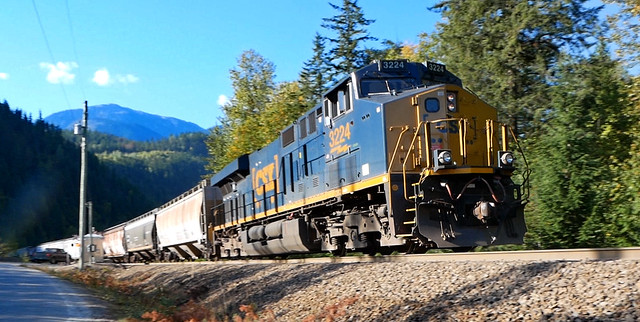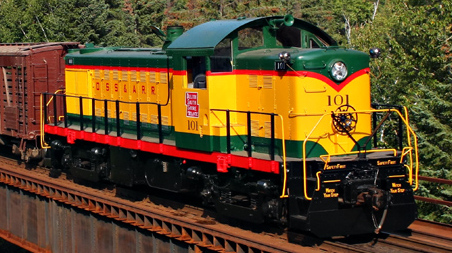But may be 80 years ago the level crossing issue was much less problematic.
I think it probably was much less of an issue in the 1930s/1940s.
The 'single cab' situation with diesels evolved over time.
In the 1930s EMC/EMD and others produced end-cab low-hood diesel switchers (shunters) and effectively 'power cars' for the 1930s streamlined, lightweight, passenger trains. To make them look modern/futuristic they were styled with curved, swept back noses. This design styling evolved into the twin-engined
E-unit passenger locos by 1937.
But the big market was obviously for freight power, so when EMD had developed a diesel engine powerful and reliable enough for that market (the V16 567 series) in 1939 they produced a 5400hp demonstrator set -
the model 'FT' - made up from four 1350 hp 'power units' with a cab at each end of the set. They kept the styling and basic construction techniques of the E-unit, and the four units were semi-permanently coupled together to effectively create a single, cab-at-each-end, locomotive roughly equivalent in power to the largest steam locos of the time. The middle units of the set were cab-less 'booster' units.
That went down a storm with the railroads, and made the curved, swept-back 'cab unit/carbody' styling commonplace for the next 20 years or so. For flexibility, the semi-permanent couplings were soon replaced with standard AAR couplers, and railroads just mixed and matched cabbed and cab-less units, turning the cabbed units on turntables and 'wye's as necessary.
Problem was, while the F-units were fine for hauling mainline 'road' trains, they weren't very good for switching/local freight use due to not-so-good visibility from the cab. ALCo sorted that problem with the
first 'road switcher' design in 1941, the RS-1
(image from Wikipedia -
https://commons.wikimedia.org/wiki/File:DSSA_RS-1_(cropped).jpg )
EMD copied the idea in 1949 with the GP7 series, and the 'road switcher' design slowly evolved into today's near 200 tonne, wide-cab monsters.
An EMD F-unit cab and booster pair (with the nose of an EMD switcher on the right):
 EMD FP7 WP 805-A and train
EMD FP7 WP 805-A and train by
ac6044cw, on Flickr
An early EMD SW-1 switcher:
 EMD SW1 WP501
EMD SW1 WP501 by
ac6044cw, on Flickr
An EMD GP7 (right) and GP9 (left):
 WP GP7 and SP GP9
WP GP7 and SP GP9 by
ac6044cw, on Flickr
A 1969-vintage EMD GP38-2 (note how small it is compared to the modern loco behind it):
 GMTX 2681
GMTX 2681 by
ac6044cw, on Flickr
A snow-fighting equipped GP38-2:
 Snow equiped GP38-2
Snow equiped GP38-2 by
ac6044cw, on Flickr
A typical modern GE 'road switcher' - an ES44:
 CN #2935 at Whistler
CN #2935 at Whistler by
ac6044cw, on Flickr
 Climbing west out of Revelstoke - 2
Climbing west out of Revelstoke - 2 by
ac6044cw, on Flickr


 EMD FP7 WP 805-A and train
EMD FP7 WP 805-A and train EMD SW1 WP501
EMD SW1 WP501 WP GP7 and SP GP9
WP GP7 and SP GP9 GMTX 2681
GMTX 2681 Snow equiped GP38-2
Snow equiped GP38-2 CN #2935 at Whistler
CN #2935 at Whistler Climbing west out of Revelstoke - 2
Climbing west out of Revelstoke - 2
